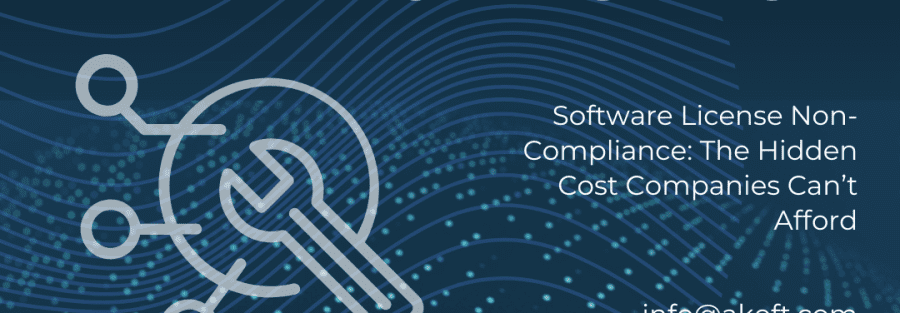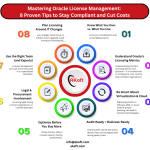Most IT leaders know software licensing is complicated, but too many still underestimate the real price of getting it wrong. Non-compliance isn’t just a technical slip; it’s a financial and reputational risk that can hit harder than a data breach.
Why Non-Compliance Happens
In most cases, companies don’t set out to cheat the system. Non-compliance usually creeps in quietly:
- Complex contracts: Oracle, Microsoft, SAP, and other major vendors use dense agreements filled with conditions that are easy to misinterpret.
- Poor visibility: IT teams lose track of what’s installed versus what’s licensed, especially across hybrid or multi-cloud environments.
- Business growth: Mergers, expansions, or scaling up digital services often trigger license terms companies didn’t even know applied.
- Misunderstood rights: Using virtualization, cloud platforms, or features bundled in products can easily violate license rules without anyone noticing.
In short, it’s rarely intentional misuse, it’s complexity meeting a lack of oversight.
The Financial Sting
When auditors show up, even minor gaps can turn into massive liabilities. A few real-world examples:
- A large bank in Europe thought it was fully licensed but hadn’t accounted for Oracle’s virtualization policies. The audit bill exceeded €15 million.
- A government department in Asia underestimated the cost of Microsoft SQL Server cores. Their shortfall ran into several million dollars in “true-up” payments.
- A manufacturing company in the US got caught running non-compliant Java usage after Oracle changed its licensing model. They’re now stuck with ongoing subscription costs that wiped out planned IT savings.
These cases aren’t outliers, they’re typical of what happens when software audits uncover non-compliance.
The Ripple Effects
The damage doesn’t stop at the invoice. Companies dealing with license violations face:
- Ongoing support costs locked into expensive contracts they never budgeted for.
- Operational disruption as teams scramble to prove usage, fix systems, and negotiate with vendors.
- Reputational risk when compliance issues become public, especially for government and regulated industries.
- Loss of leverage in future contract negotiations with vendors who now hold the upper hand.
Compliance Is Cheaper Than Non-Compliance
The math is simple: investing in proactive software asset management and regular license reviews costs far less than a multimillion-dollar settlement. An independent audit of your license position can highlight risks before vendors do. And with cloud adoption, containerization, and Java licensing changes, the risks are growing, not shrinking.
Bottom Line
Software license non-compliance is one of the most expensive IT risks that businesses continue to underestimate. It’s not just about avoiding penalties; it’s about protecting your budget, your reputation, and your strategic flexibility. The companies that get ahead of compliance treat it as a core part of IT governance, not an afterthought.



